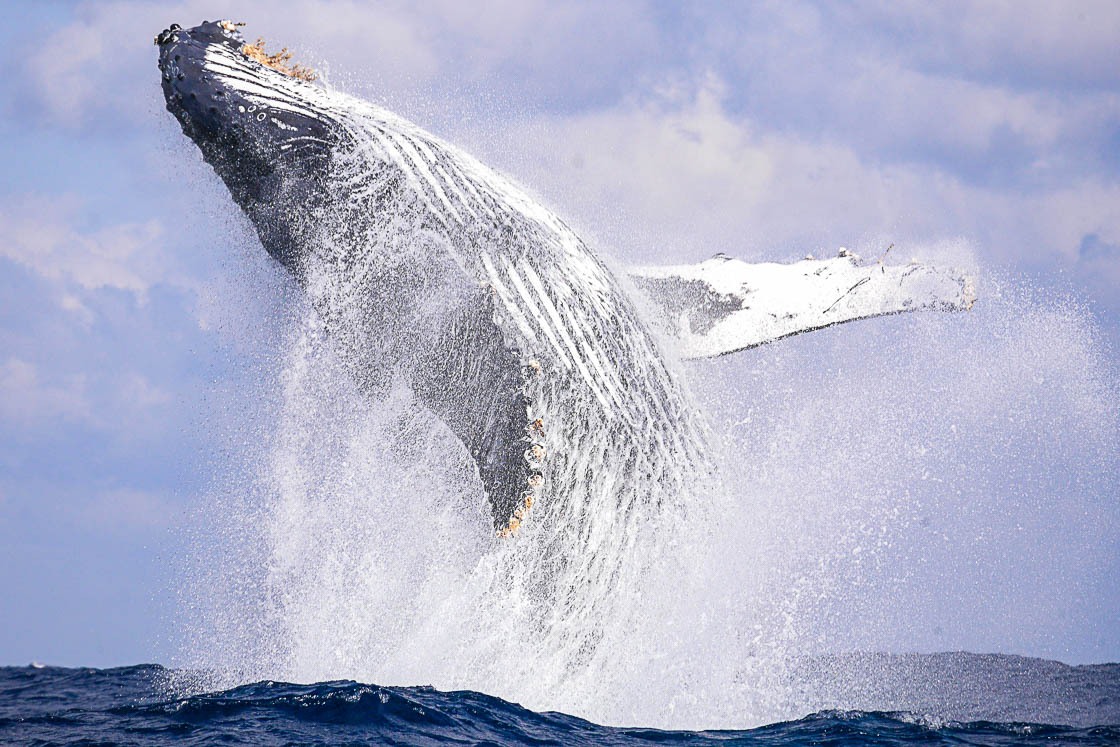Hachijojima, one of Tokyo’s farthest islands
The Izu Islands are a chain of volcanic islands in the Pacific Ocean that are under the administration of Tokyo. Due to the volcanic history in the region, various geological formations can be seen on and around the islands, creating views that are wildly different to the modern image of Tokyo. When it comes to marine and beach activities, the islands offer snorkeling, scuba diving and sunbathing. Of the dozen or so Izu Islands, only nine are inhabited making up a total population of around 21,000.
The closest island is just over 100 kilometers from central Tokyo while the furthest inhabited island is almost 360 kilometers away. The temperature on the Izu islands is a little warmer compared to in central Tokyo, so do not expect a tropical paradise during the colder months. For this article, I visited Hachijojima, the second farthest and one of the most populous inhabited Izu islands. I experienced another side of Tokyo - a remote island surrounded by nature that is perfect for those who want to live a slow life.
Hachijojima can be accessed by airplane from Haneda Airport or by long distance ferry from central Tokyo, and more detailed access information is available below.
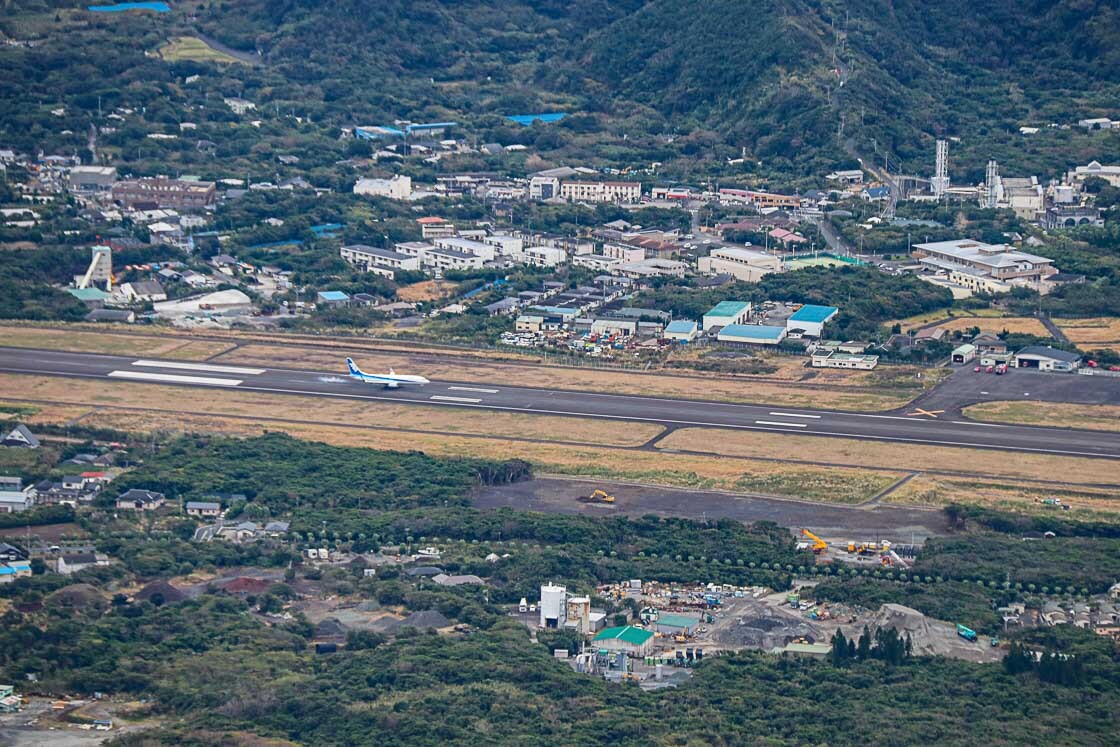
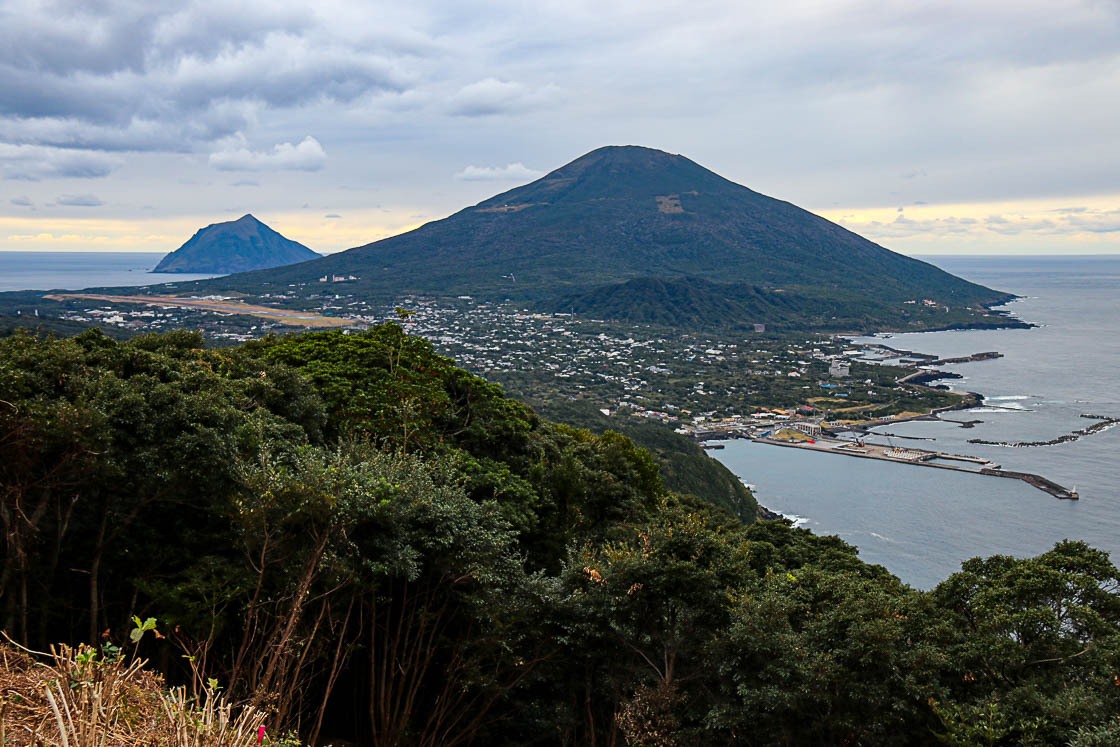
Hiking and learning about the island
I took a 55 minute flight to Hachijojima from Haneda Airport, and as the airport is pretty small, it took me no time at all to get out and on to picking up my rental car. A good way to get a quick, initial overview of Hachijojima is to visit the Hachijo Visitor Center, which is a stone's throw from the airport, and that is where I headed first.
Located on the grounds of the sprawling Hachijo Botanical Park, the visitor center has displays of the local flora and fauna of Hachijojima. Of the exhibits, the most exciting one for me was seeing a species of bioluminescent mushroom. In fact, Hachijojima is home to seven out of 13 species of bioluminescent mushrooms in Japan. Unfortunately, most of the descriptions are in Japanese, but there is a video with English subtitles introducing the island, its formation and plant diversity, which I found useful and interesting for getting an overview of the island.
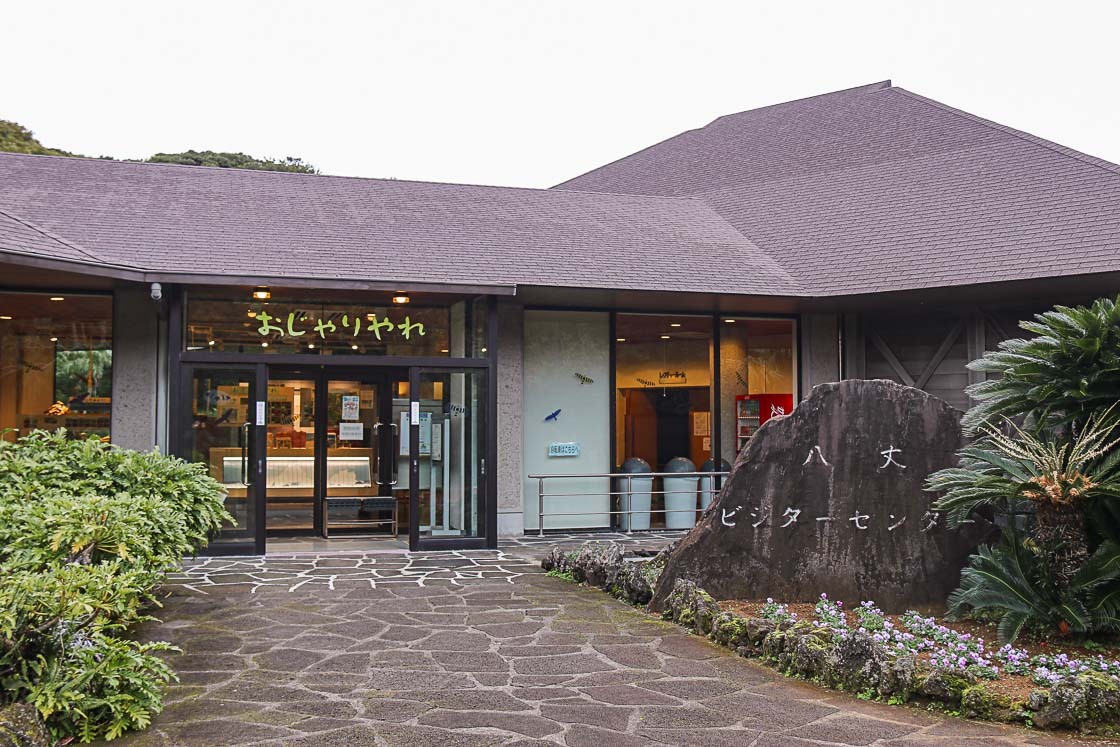
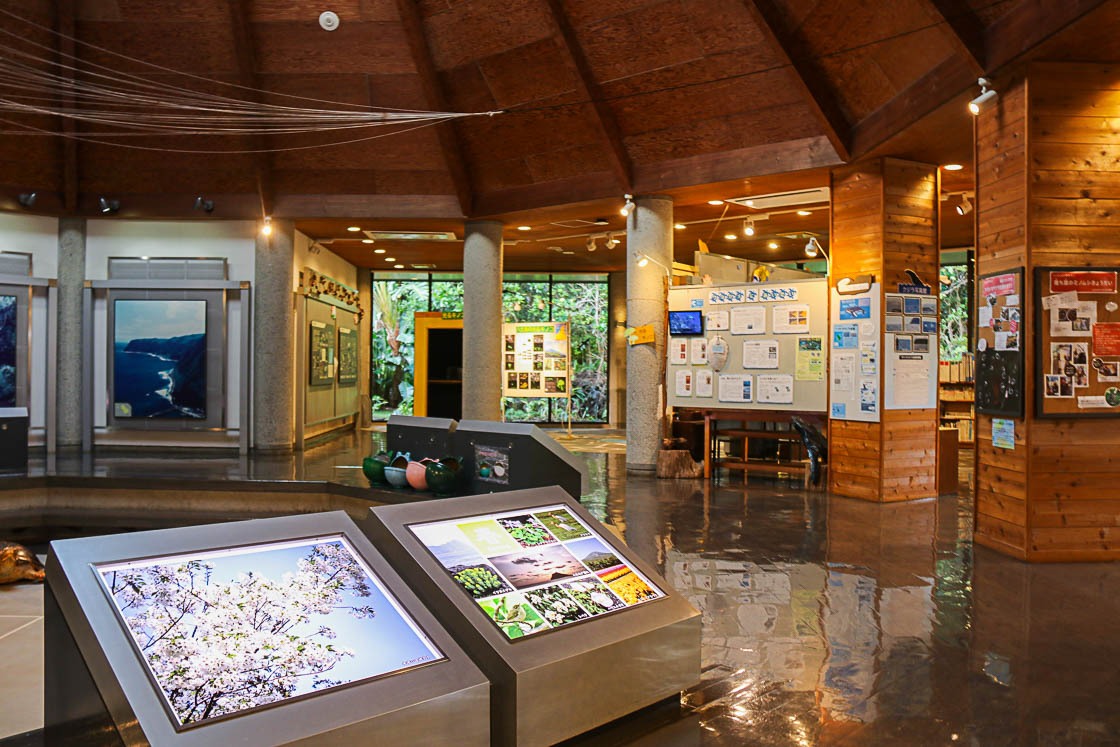
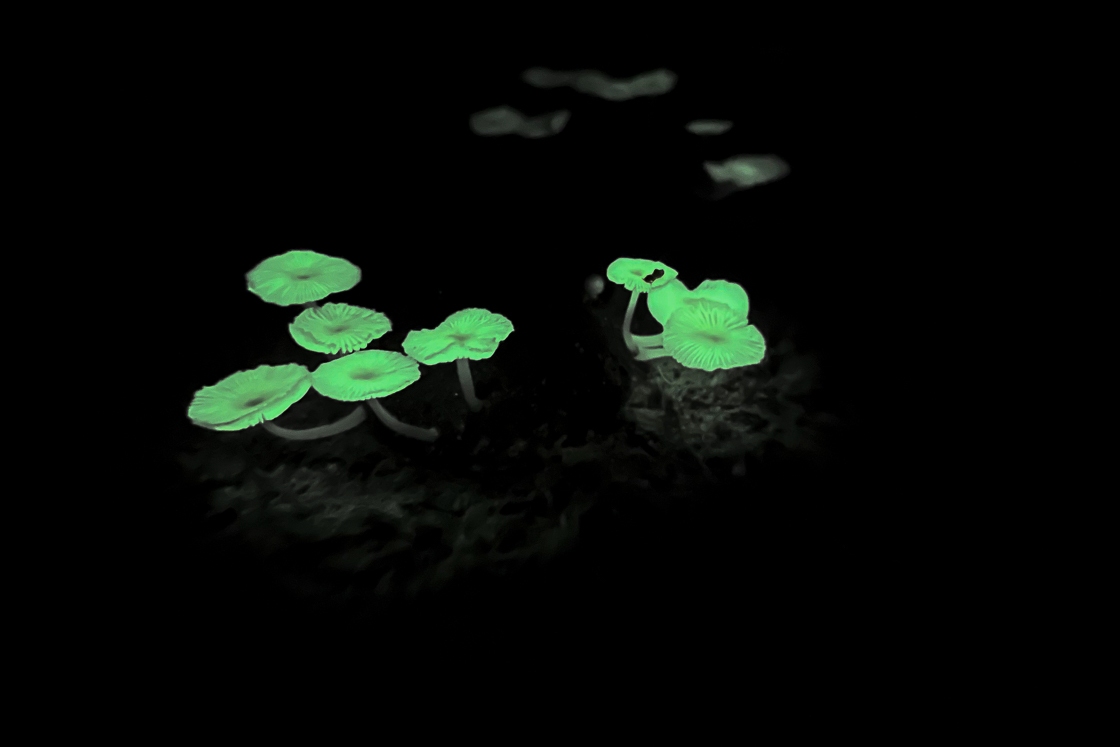
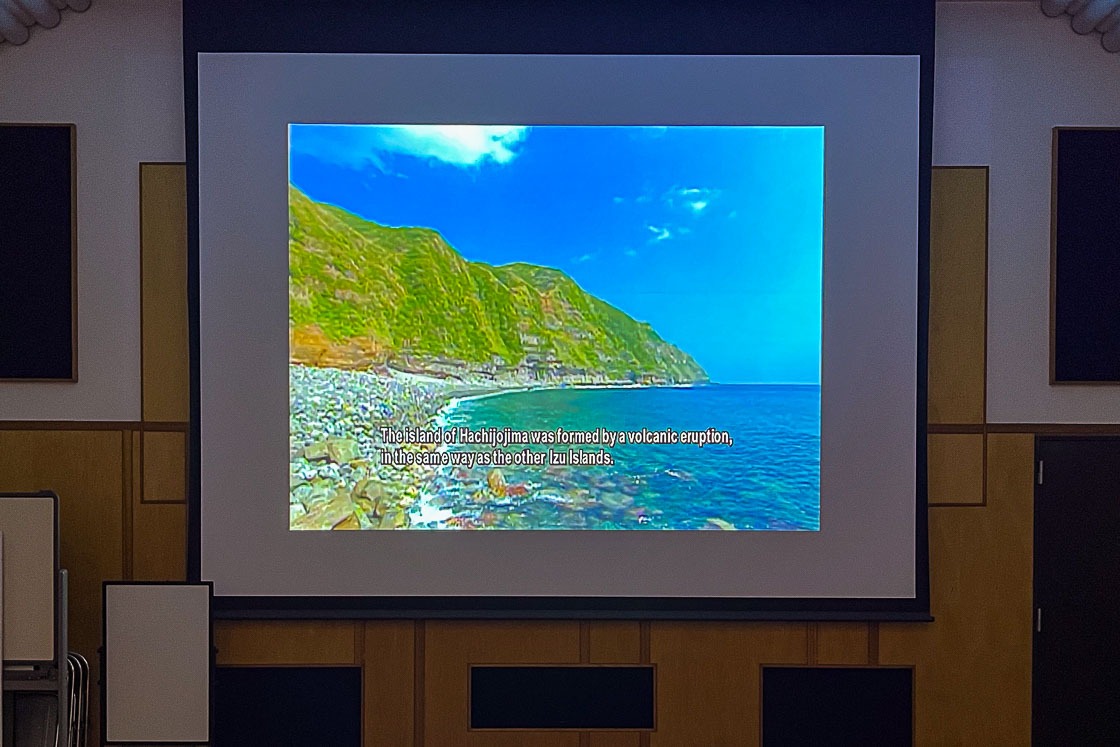
After that quick introduction to Hachijojima, I turned my attention to the mountain that looms over the airport, Mount Hachijo-Fuji, so-named for its resemblance to Mount Fuji, Japan's highest peak. Rising up at 854.3 meters, Hachijo-Fuji is the tallest mountain in the Izu island chain, and offers excellent views from the top when the weather is clear. The mountain was created about 10,000 years ago, and last erupted in 1605.
Hiking up Mount Hachijo-Fuji does not require any technical skills, but it is not easy. It takes about three to four hours from start to finish. Despite its seeming simplicity, engaging the services of a trail guide is advisable as the trail may not be obvious, and there are hidden potholes awaiting unsuspecting limbs. Another benefit of having a guide is being able to tap on their knowledge of the local flora.
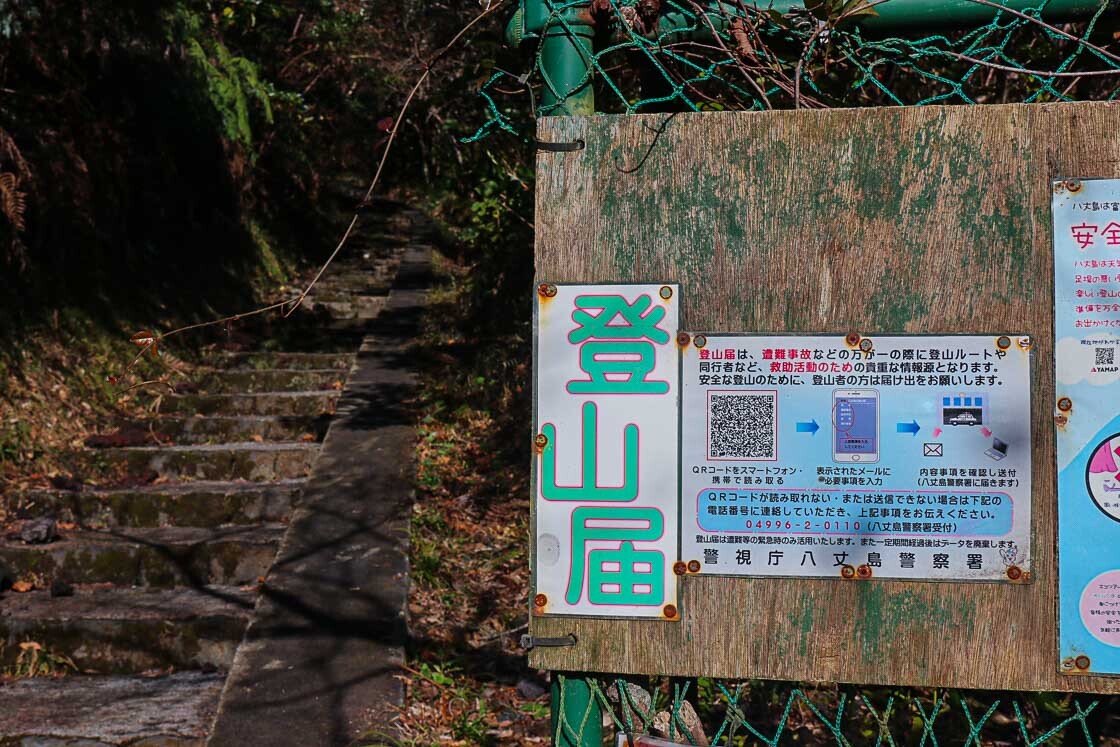
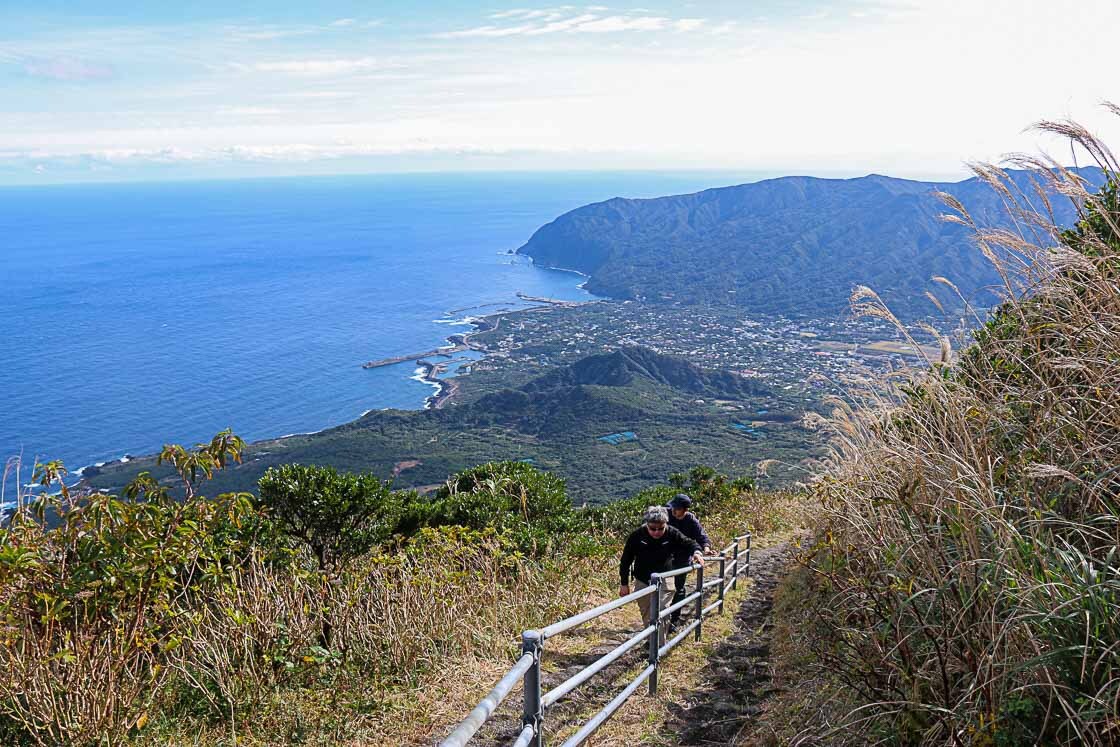
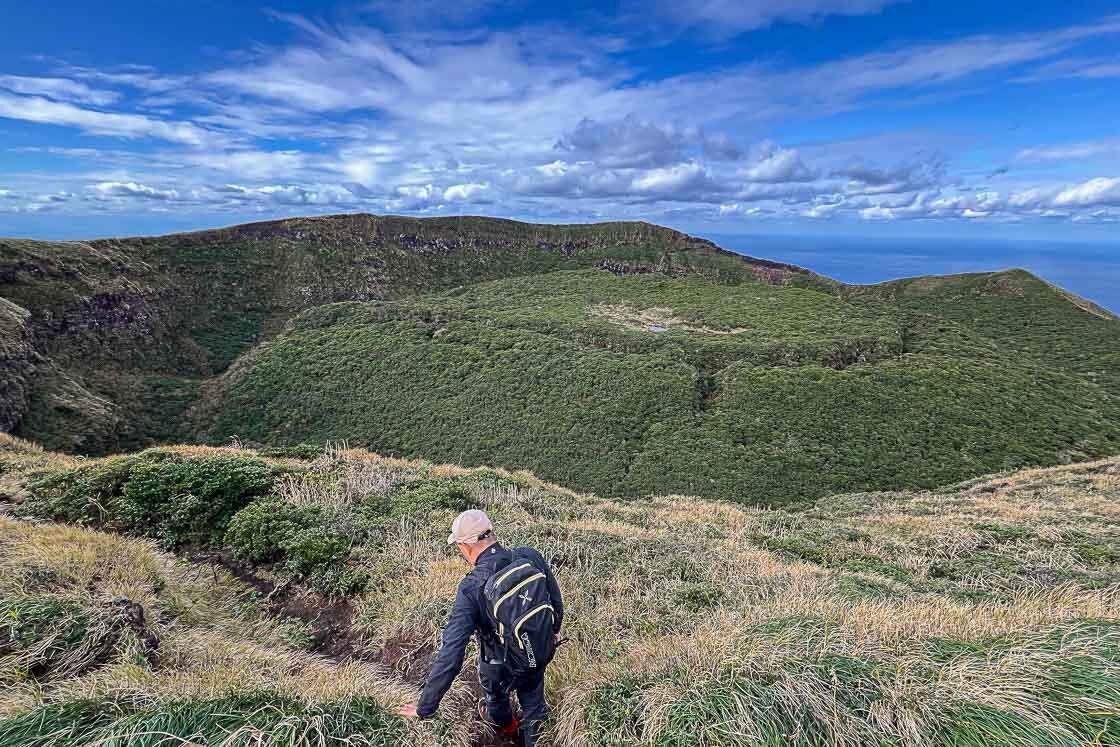
With that in mind, I hired a trail guide ahead of my trip, and arranged to meet at the trailhead on the day of the hike. It is recommended to wear good walking shoes and long pants as the path at the summit is covered in bushes with sharp leaves. Mount Hachijo-Fuji has a beautiful crater with a diameter of 400 meters and a height of about 50 meters. A trail leads along the rim of the crater and passes the highest point of the mountain. It takes about one hour to walk around the crater.
Along the way, my guide pointed out the local flowers as well as a species of evergreen trees known as Yamaguruma that are protected on the island. According to my guide, we were extremely fortunate with the weather as the winds were mild and the skies were clear. It seems that windy conditions are more common than not, which can make hiking around the crater a tough and scary experience - my guide's pro tip is to crouch down when it is very windy to avoid being blown away. Thanks to the good weather, our hike went without a hitch, and we were rewarded with views of 4-5 inhabited Izu islands as well as the nearby formerly inhabited island, Hachijo-Kojima.
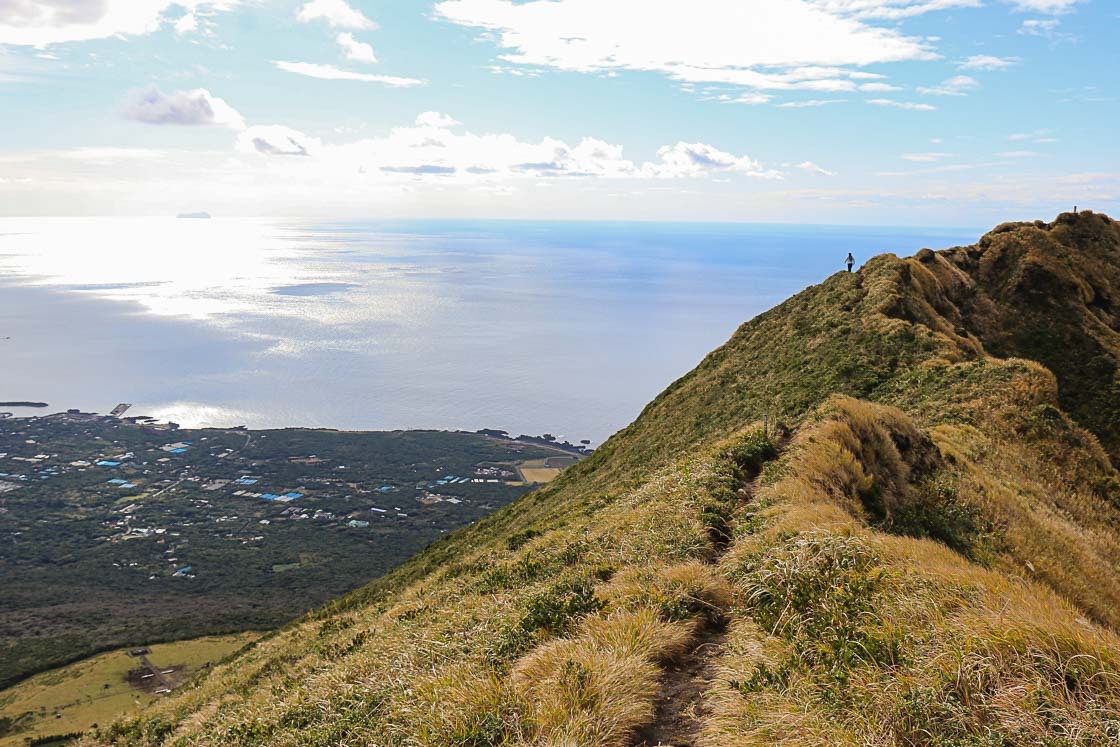
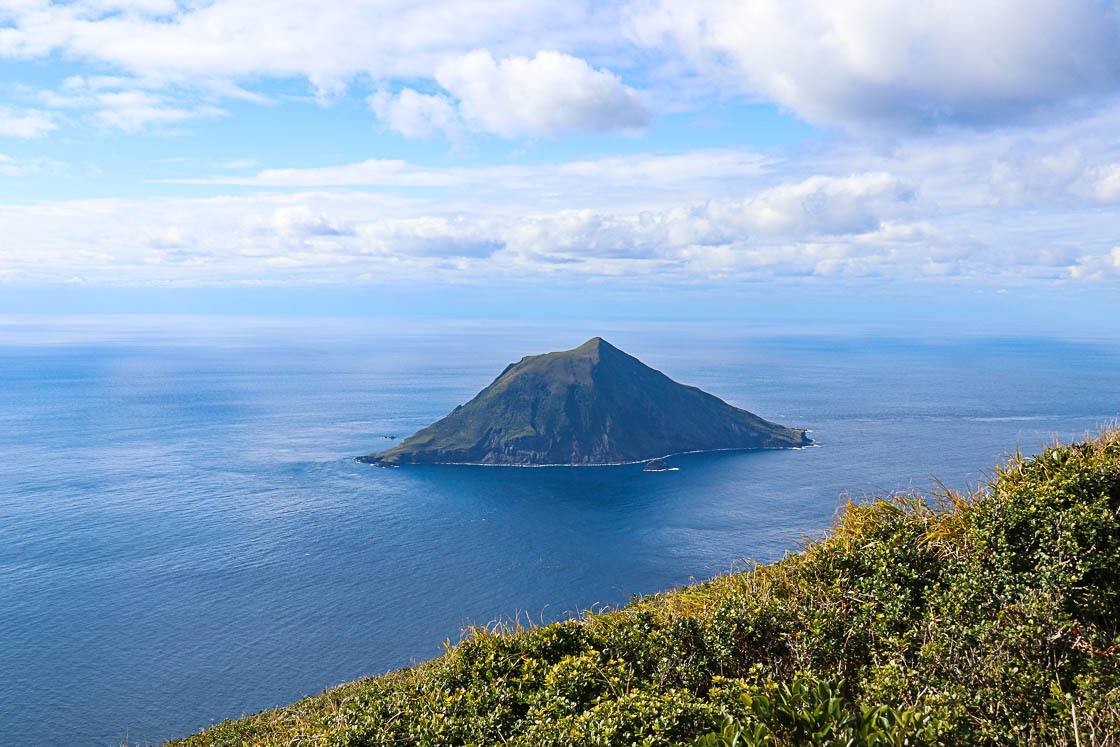
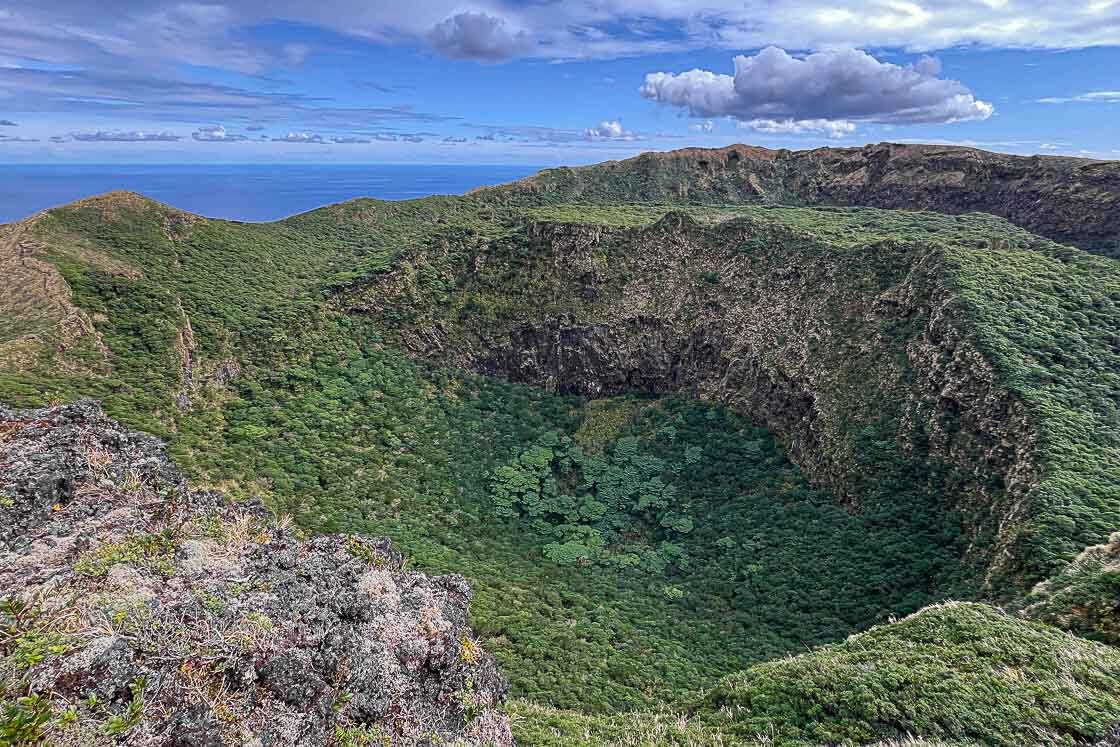
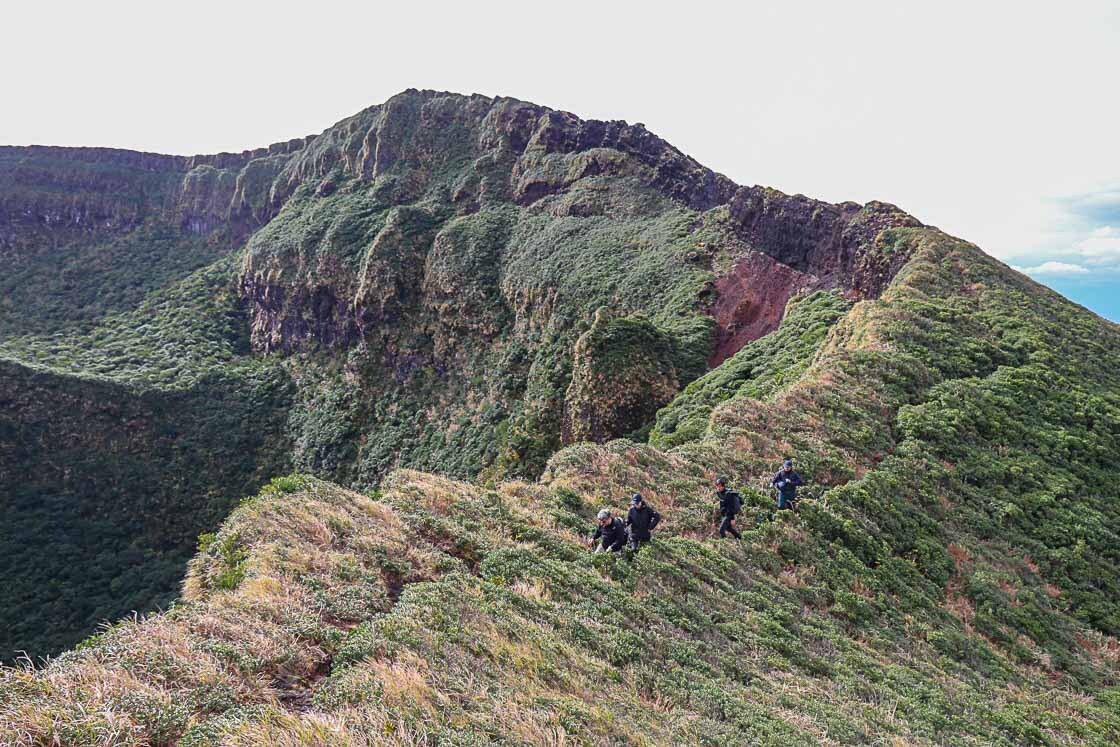
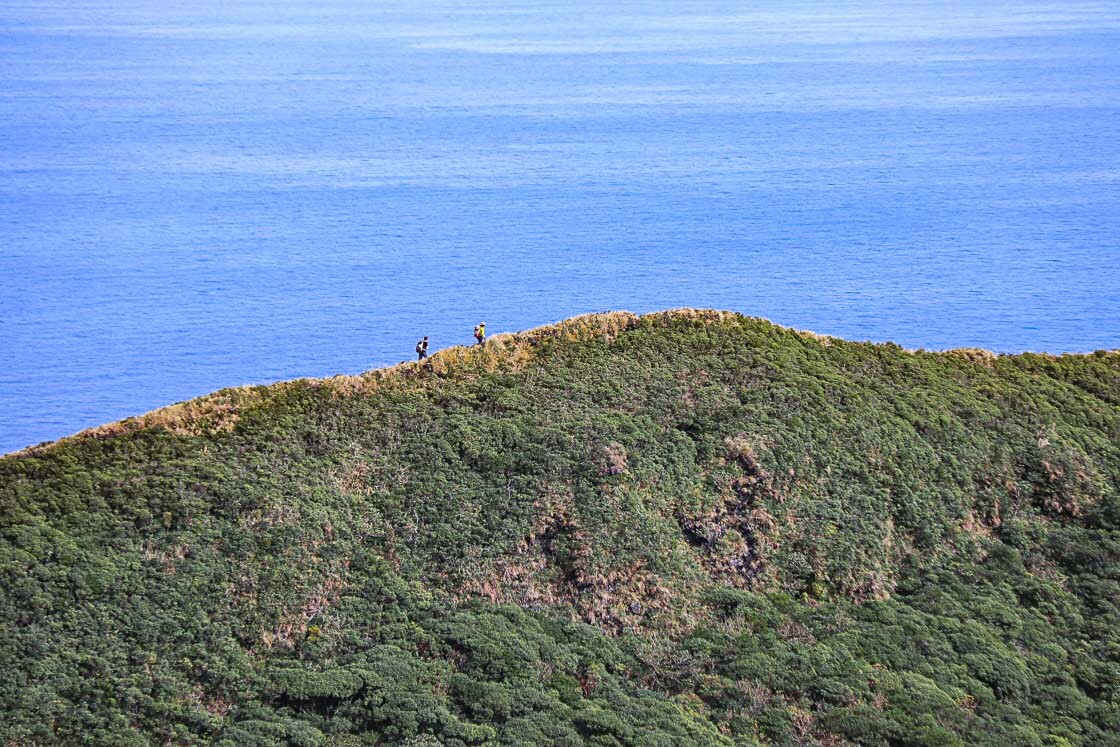
After hiking around the crater, my guide took me down to the Hachijo Sengen Shrine, which is located in the interior of the crater. Its name suggests that shrine is dedicated to Mount Fuji, and where mountain worshippers prayed. For the locals, visiting the shrine is more important that scaling the summit, as such, those who scale the mountain should also pay a visit there. I heard from my guide that the traditional way to visit the shrine is to take a round stone from a beach on the western side of the island, pray their wishes on the stone, carry it up Mount Hachijo-Fuji before depositing the stone at the shrine. Doing this is said to bring forth answered prayers.
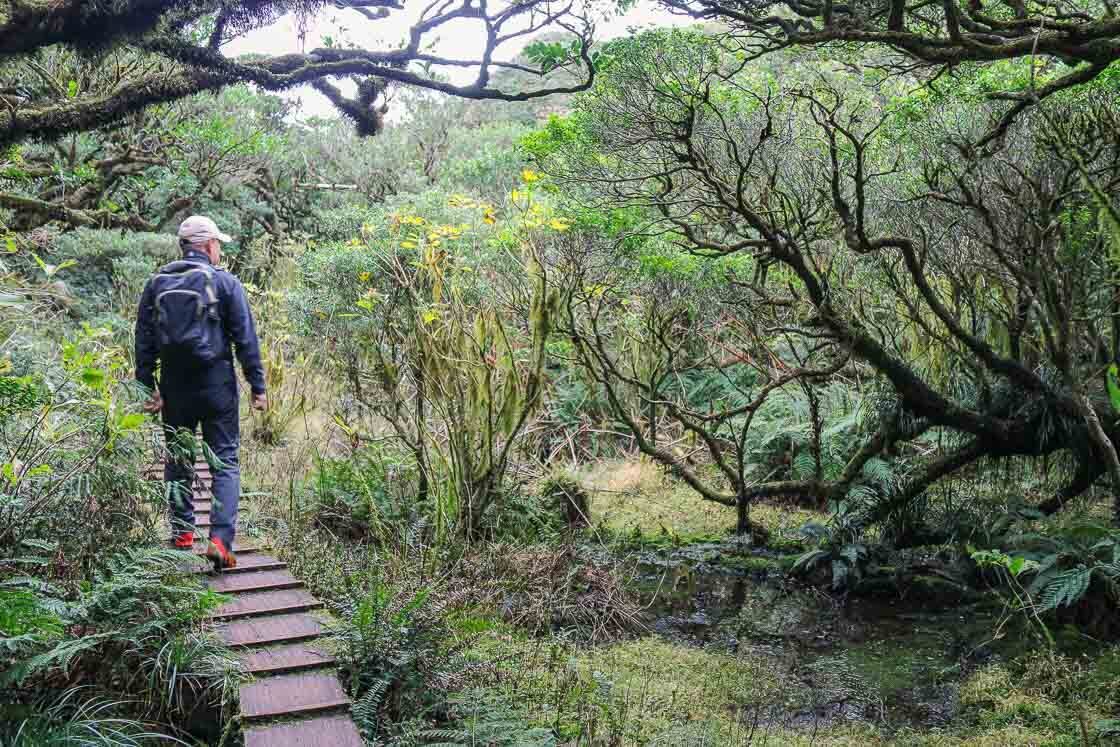
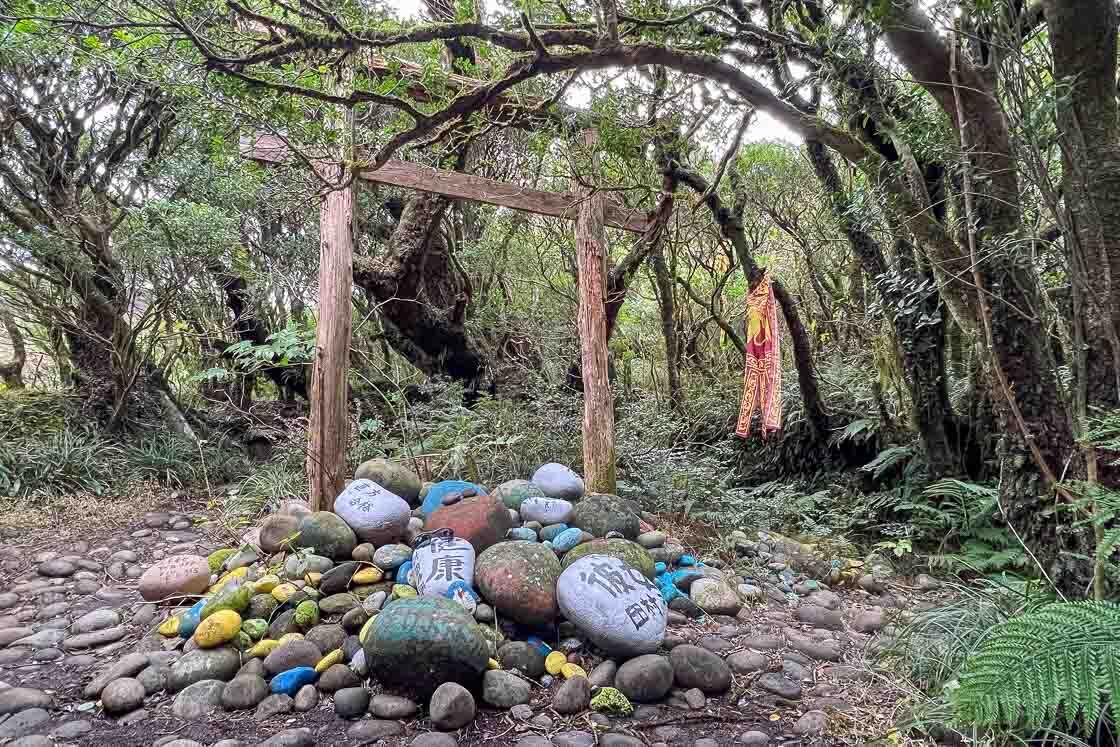
I had a great hike up Mount Hachijo-Fuji, and going for a hot spring bath was next on my itinerary. As a volcanic island, Hachijojima is home to about six hot spring facilities. Miharashi no Yu in the south of the island is probably the most well-known of the lot with its outdoor bath offering bathers panoramic views of the ocean - even whale sightings in the winter - as well as the starry night sky.
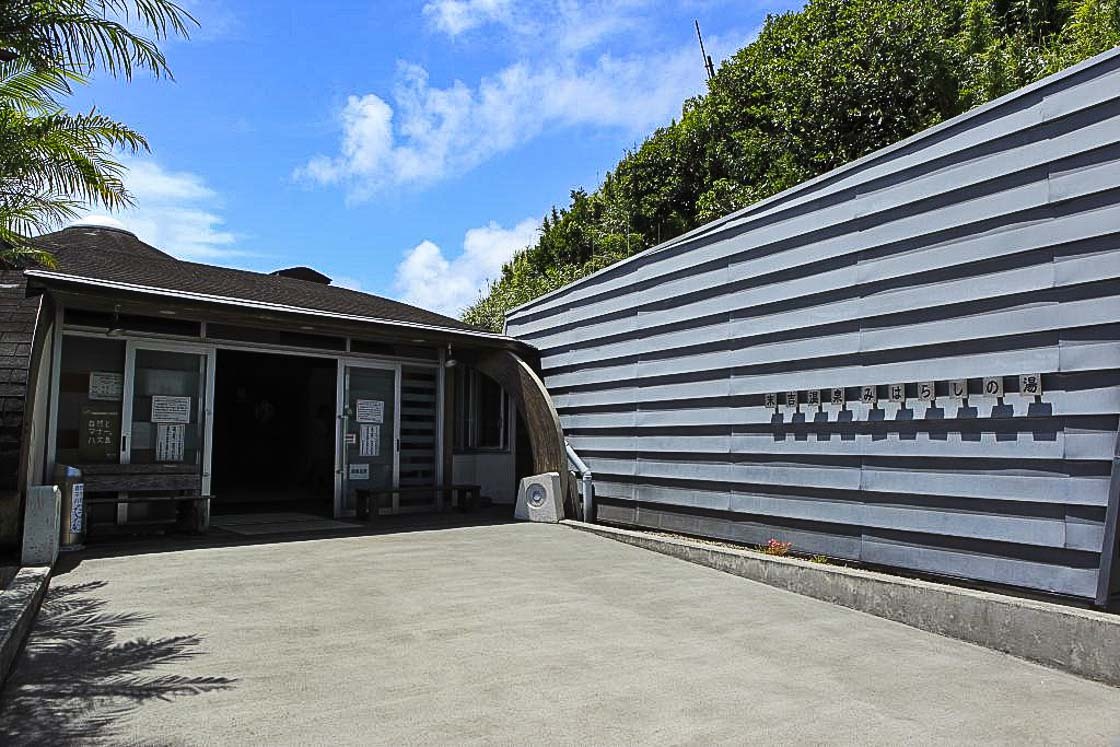
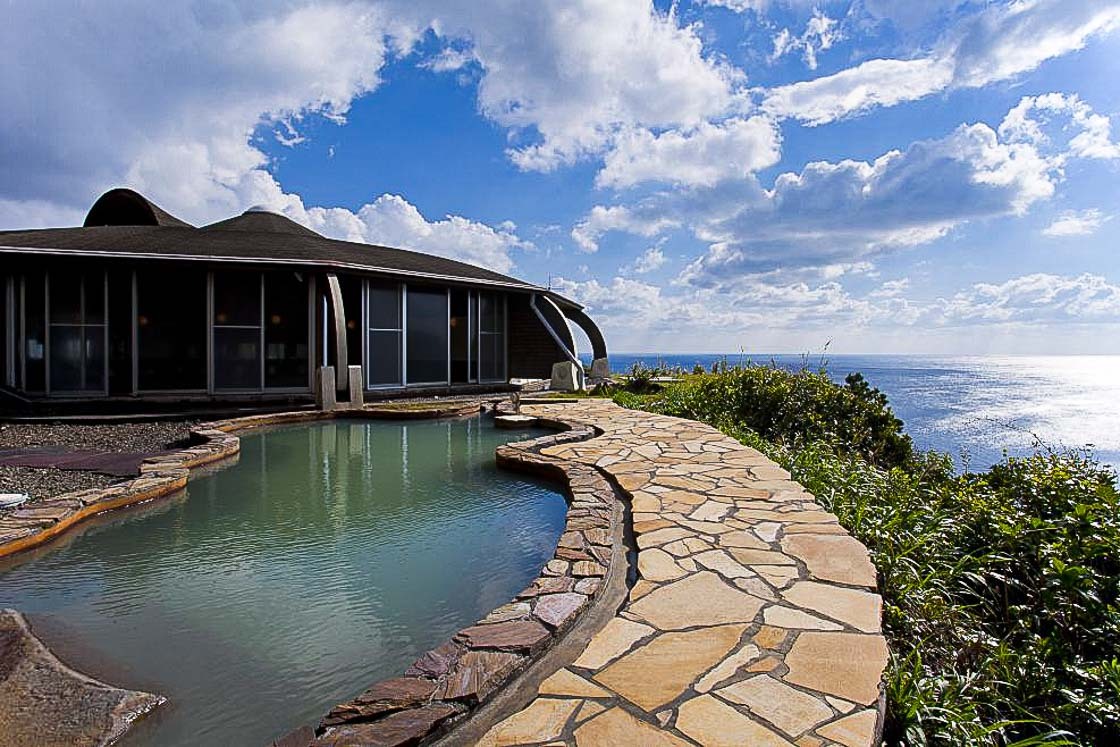
It was time for dinner after that nice bath, and I made my way to a local restaurant. There are a handful of restaurants open for dinner in Hachijojima, and the most popular ones require advance reservations as seats are often limited. As I did not want to be disappointed, I made a reservation at Sosaku Kyodo Izakaya Eight (8) ahead of my trip. Izakaya are Japanese restaurants that serve up a variety of dishes, and my dinner restaurant served up innovative and traditional dishes using local ingredients.
It was at Eight that I first learned about ashitaba, a local green leafy vegetable that is grown in Hachijojima. The medicinal plant is said to contain properties like dietary fiber, and when compared to regular vegetables, plenty of vitamins and polyphenols, in particular chalcones, which have preventive and protective properties. I went from never hearing about it before to seeing it everywhere.
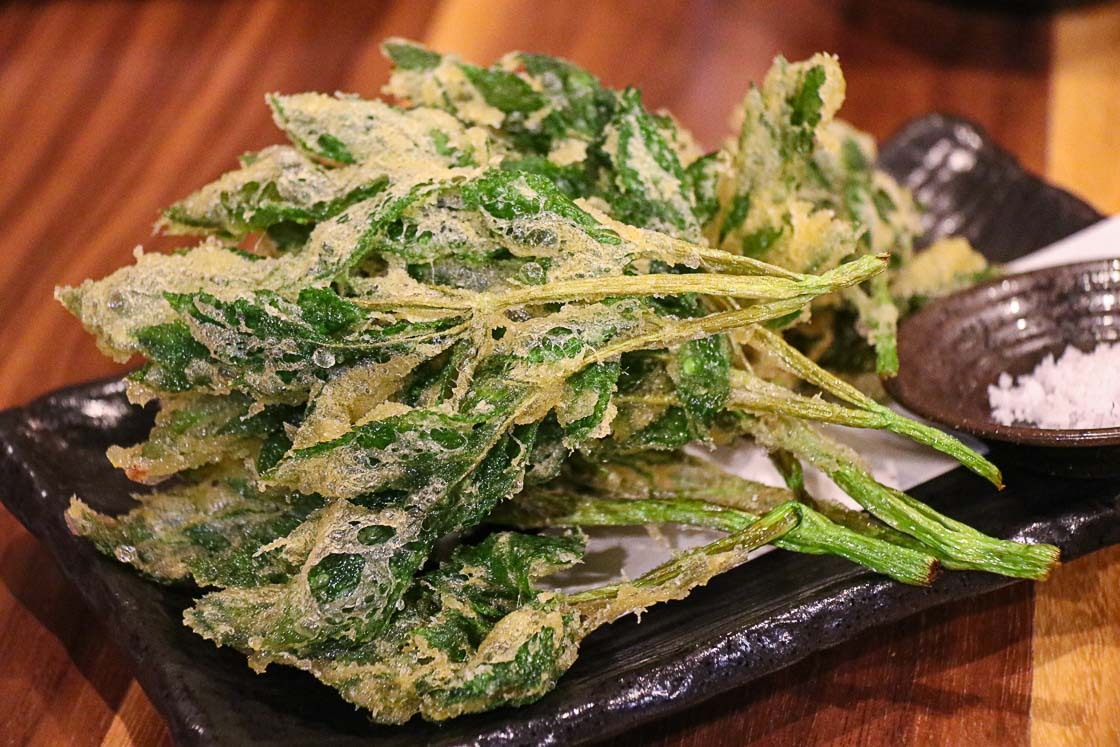
Another local delicacy I had the opportunity to try was kusaya, a pungent fermented dried fish that is a delicacy of the Izu Islands. Kusaya is typically eaten as a drinking snack, in which the dried fish is grilled and eaten as an accompaniment to alcohol. I hear it is somewhat of an acquired taste, and like strong blue cheese, you either love it or hate it. At Eight, I ordered kusaya pizza, which is a nice way of easing myself into the delicacy. I would recommend it for a first foray to kusaya as the smell and flavour were tolerable and not as awful as the rumours I have heard.
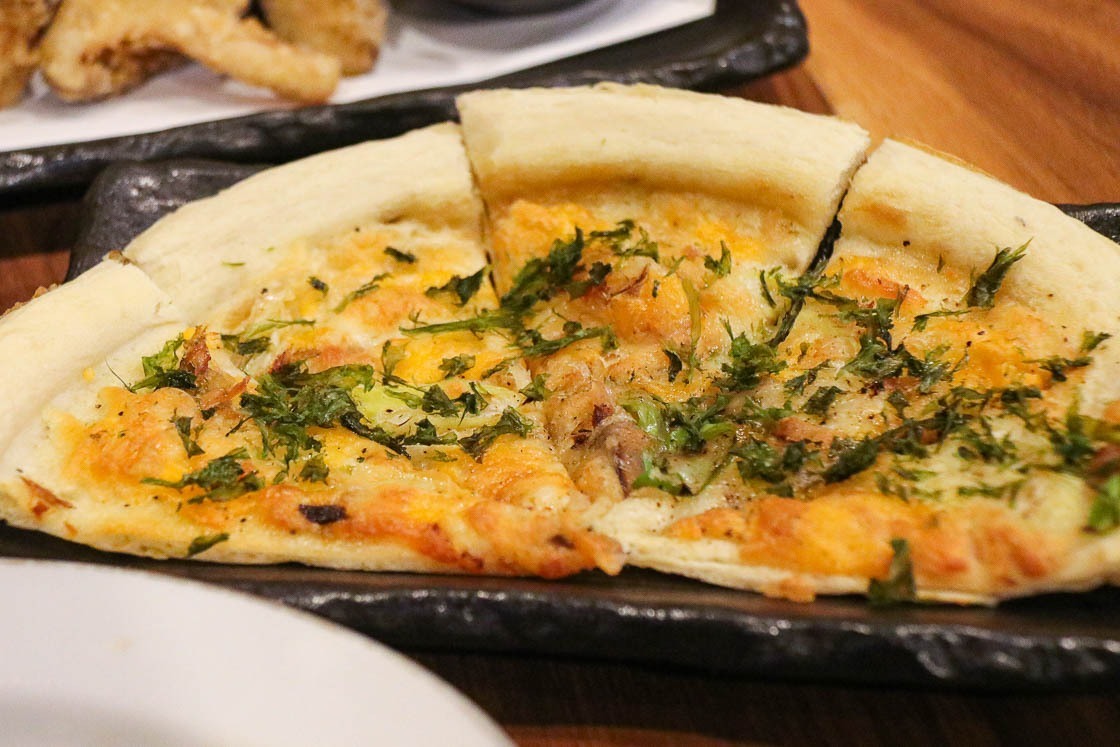
Some standout dishes at dinner included ashitaba tempura, kusaya pizza and breaded shiitake mushrooms, which were locally grown and had a very meaty texture. The restaurant also had a nice selection of local drinks, including alcohol containing ashitaba, but be reminded that Japan has a zero tolerance on drinking and driving, even in remote islands like Hachijojima.
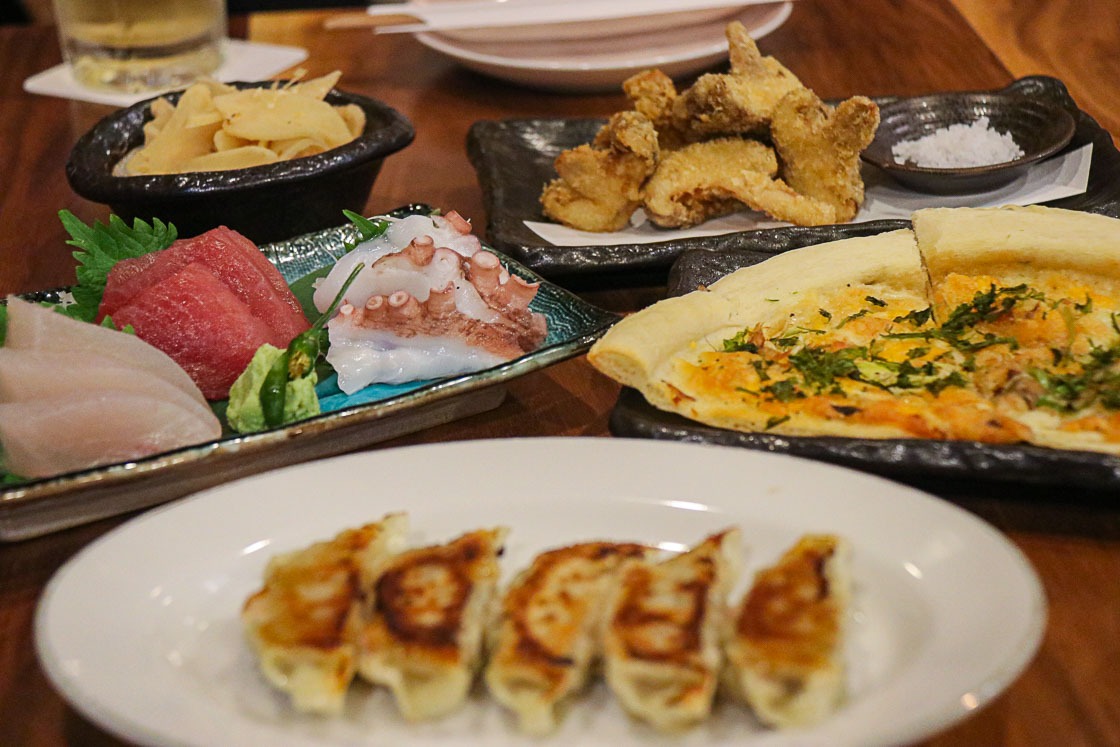
In terms of accommodation, visitors can choose from family-operated lodgings to rental cottages to hotels. I opted to stay at one of the few hotels on the island at the base of Mount Hachijo-Fuji near the airport.
Whale watching and enjoying the island life
As mentioned before, the Izu Islands are popular during the warmer months for their beaches and marine activities like snorkeling and scuba diving. Hachijojima, on the other hand, is one of the few places around Tokyo where whales can be seen during the colder months from late November through to early April. Whale watching tours are typically offered from mid December through till the end of March. Whales can also be seen from land, though that requires some patience and good eyes to scan the water surface.
As the tours are held in the windy, colder months, participants should be prepared for the cold. Gloves, warm hats, jackets and non-slip shoes are recommended. Depending on weather conditions, tours depart from one of the four ports on Hachijojima, and the confirmed departure point will be communicated the day before or an hour before the tour at the very latest. Whale watching tours typically last about 2.5 to 3 hours, during which there is usually a high chance of seeing whales or blows - when whales blow air out of their blowholes.
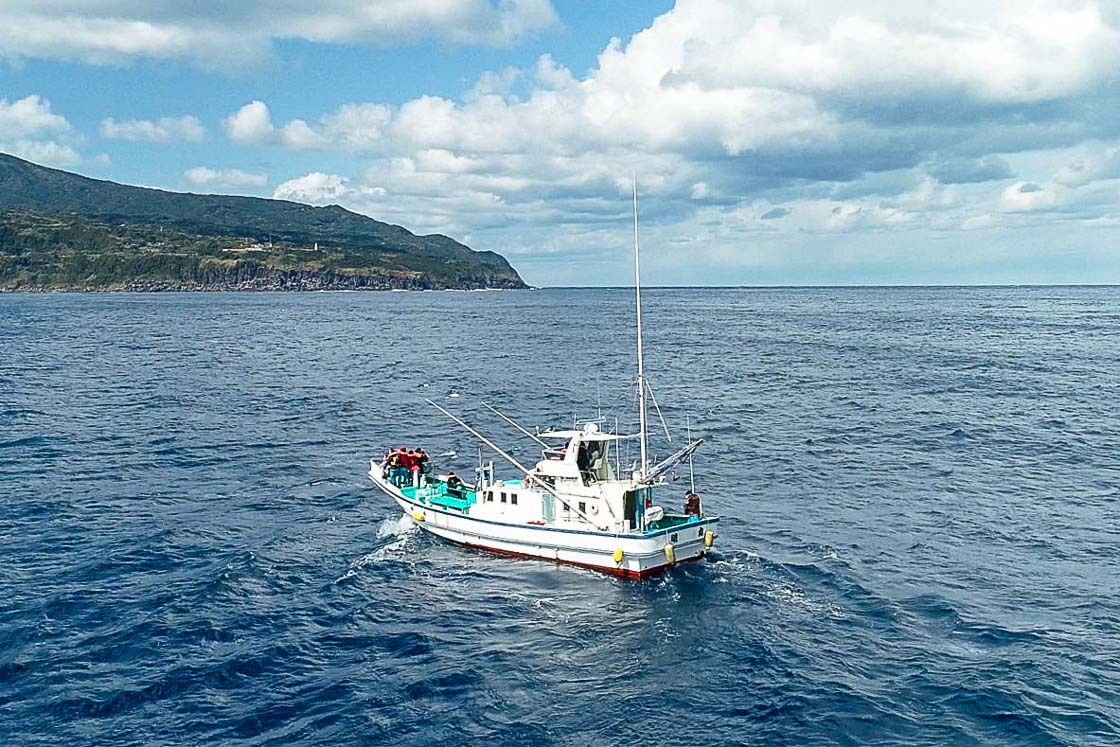
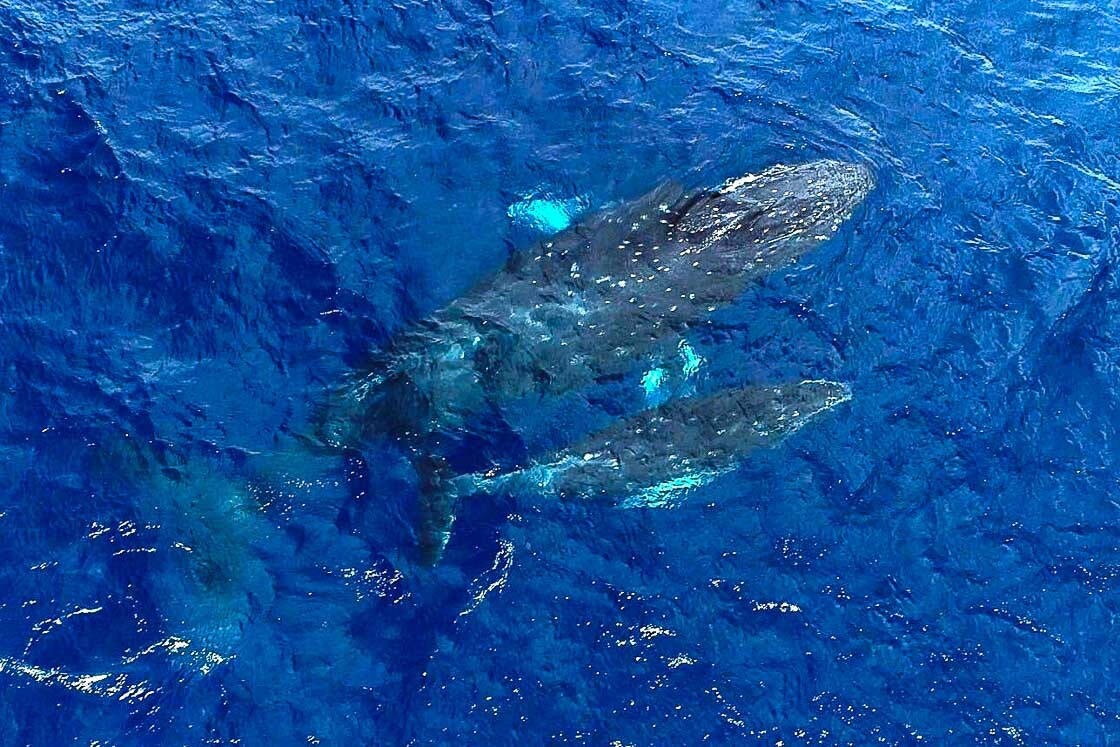
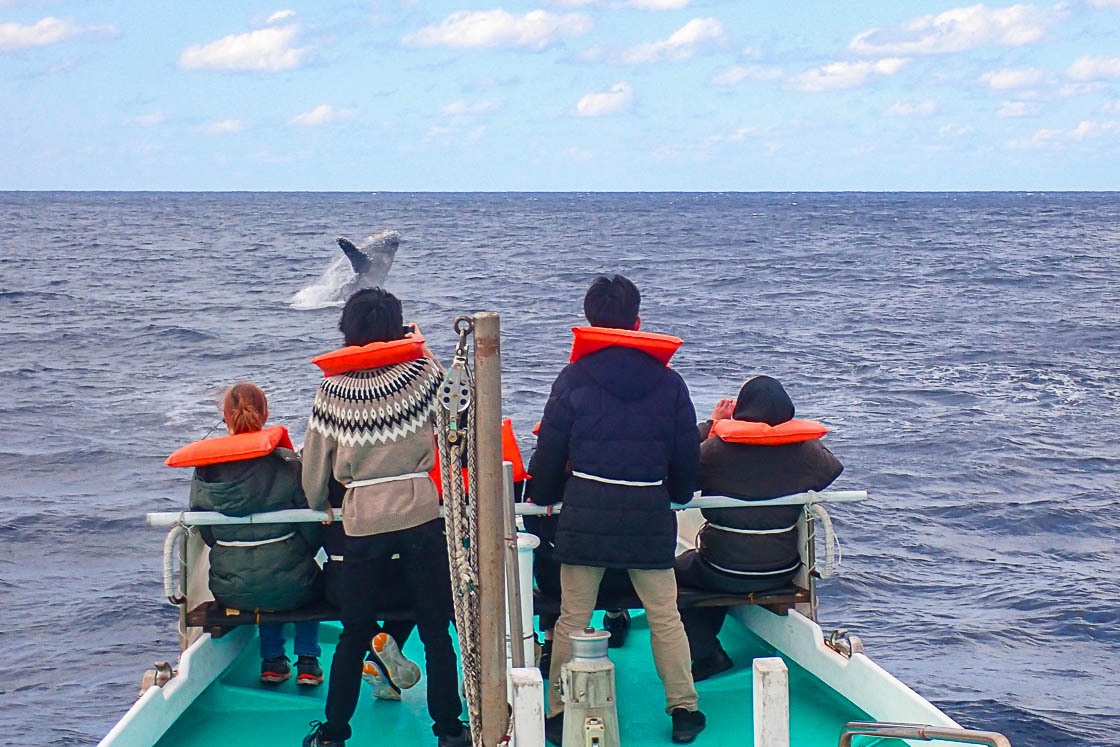
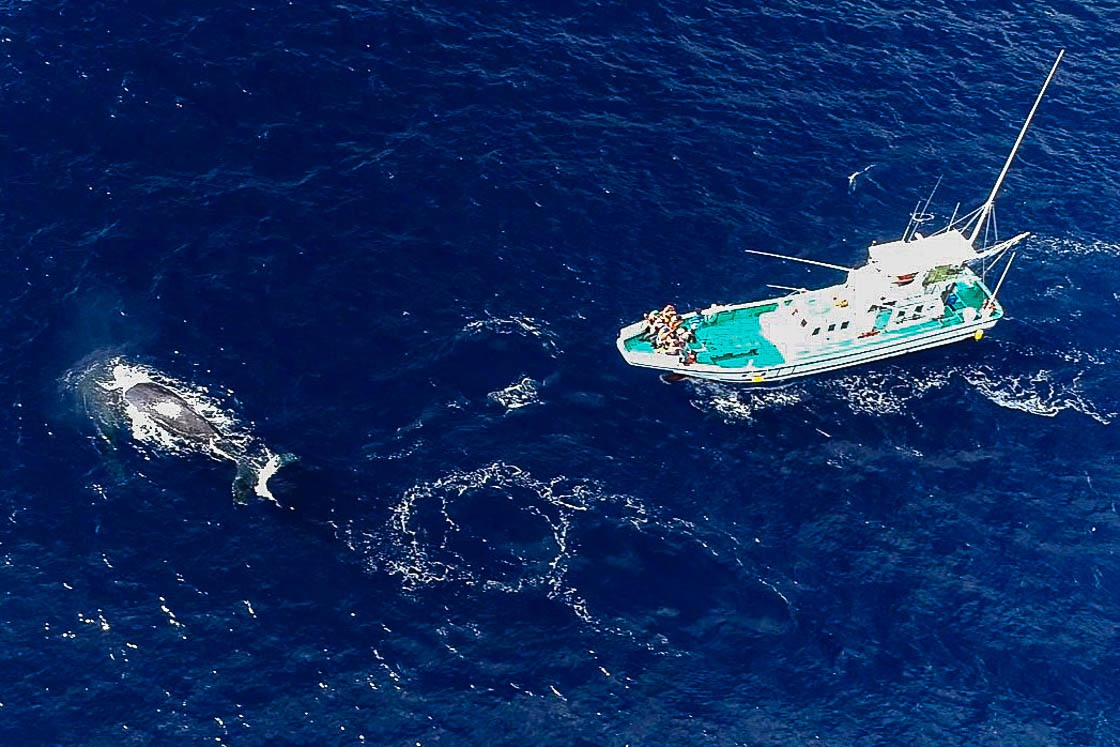
After an exciting search for these gentle giants of the sea, I returned to land for my final exploration of the town center before my flight back. Downtown Hachijo is not too large, and many of the shops and restaurants are spread out over a four kilometer span just south of the airport. It is possible to walk or cycle around the town center, but as I had my rental car, I decided to drop by some places of interest.
First was Seaside Kitchen Wa, a local burger joint a stone's throw from Sokodo Beach on the eastern side of the island. The restaurant carries an innovative food and drink menu that incorporates local ingredients like ashitaba (there it is again!) and fruit lemon, a local lemon hybrid that is almost twice the size of a typical lemon with a yellow-orange tone peel. It was tough to decide what I wanted for lunch, especially when everything looked so good. The only solution is visiting again and with more people to try the other items on the menu.
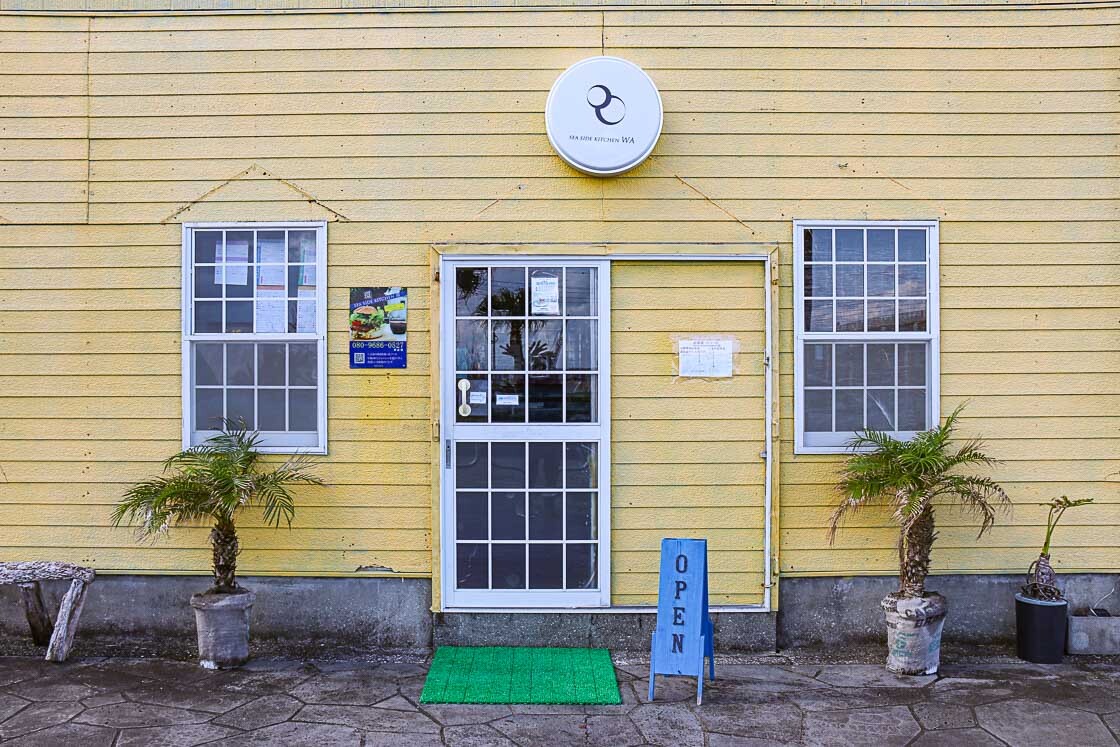
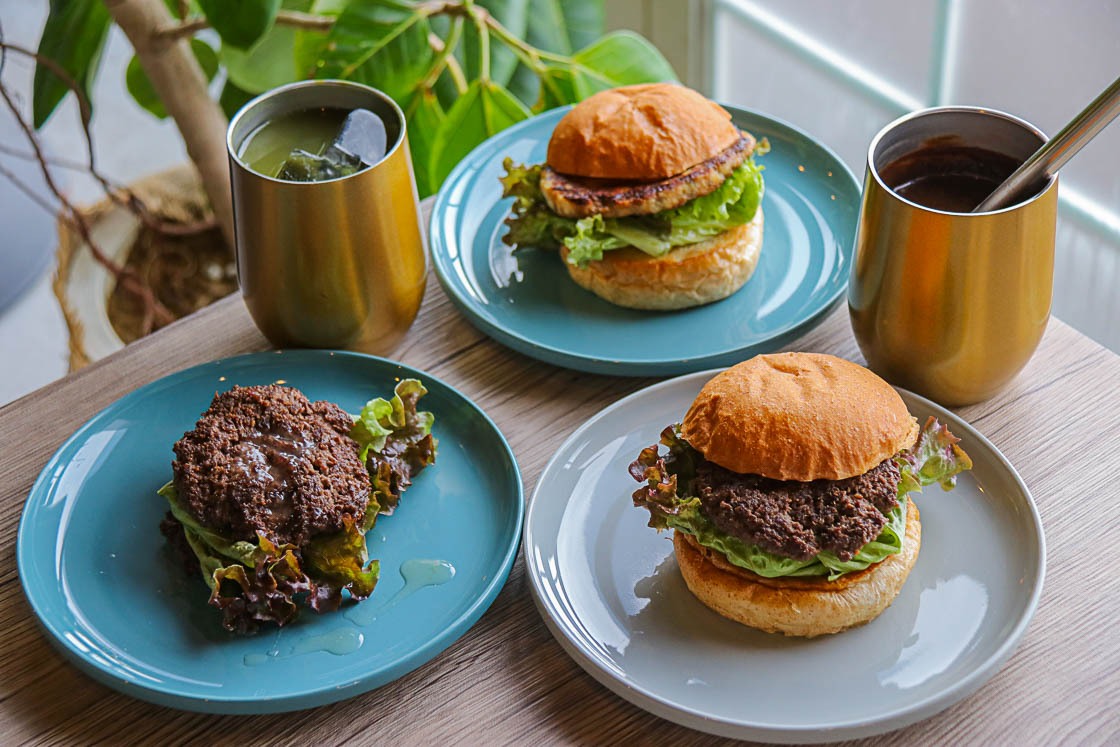
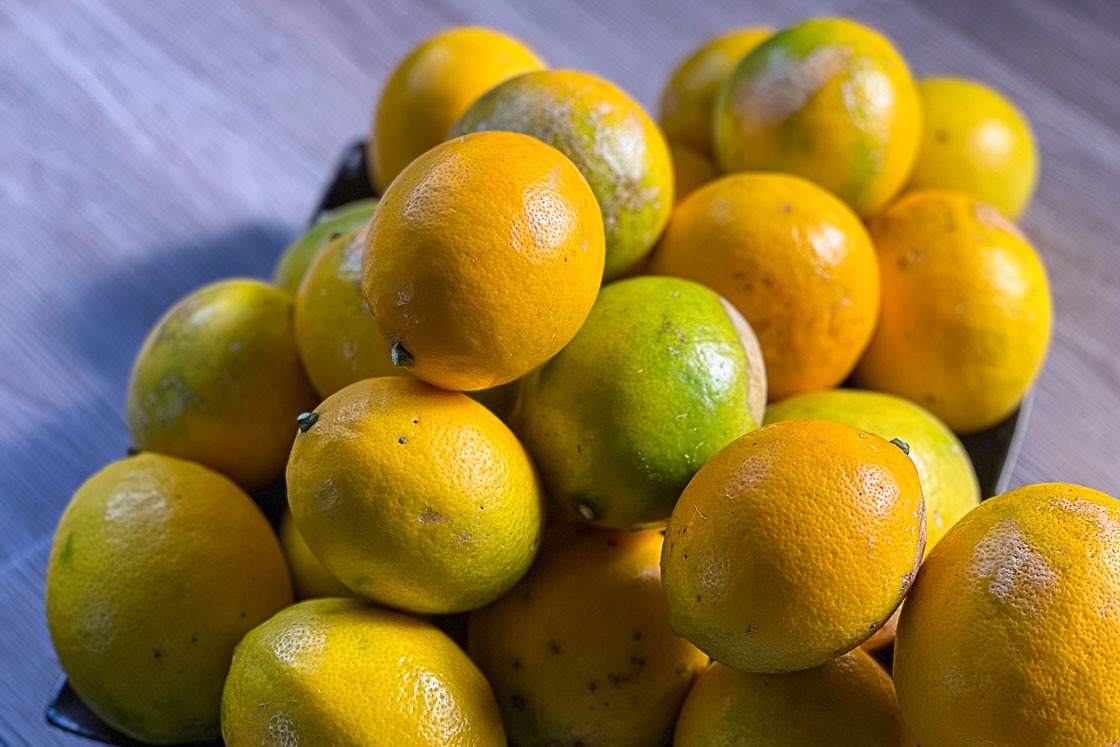
One of my favorite ways to explore and learn about a new place is to visit the local supermarket, and I made sure to visit one in Hachijojima. There are a handful of supermarkets on the island, and I visited Hachijo Store, which carries lots of local vegetables, ready-to-eat meals and locally made jams and dried foods. I picked up a few edible souvenirs to remind myself of my short, but delightful time in Hachijojima.
During the colder months, Bulblue Cafe Stand, a popular island food and drink truck, is stationed outside of Hachijo Store. The mobile cafe can be found near Sokodo Beach during the warmer months.
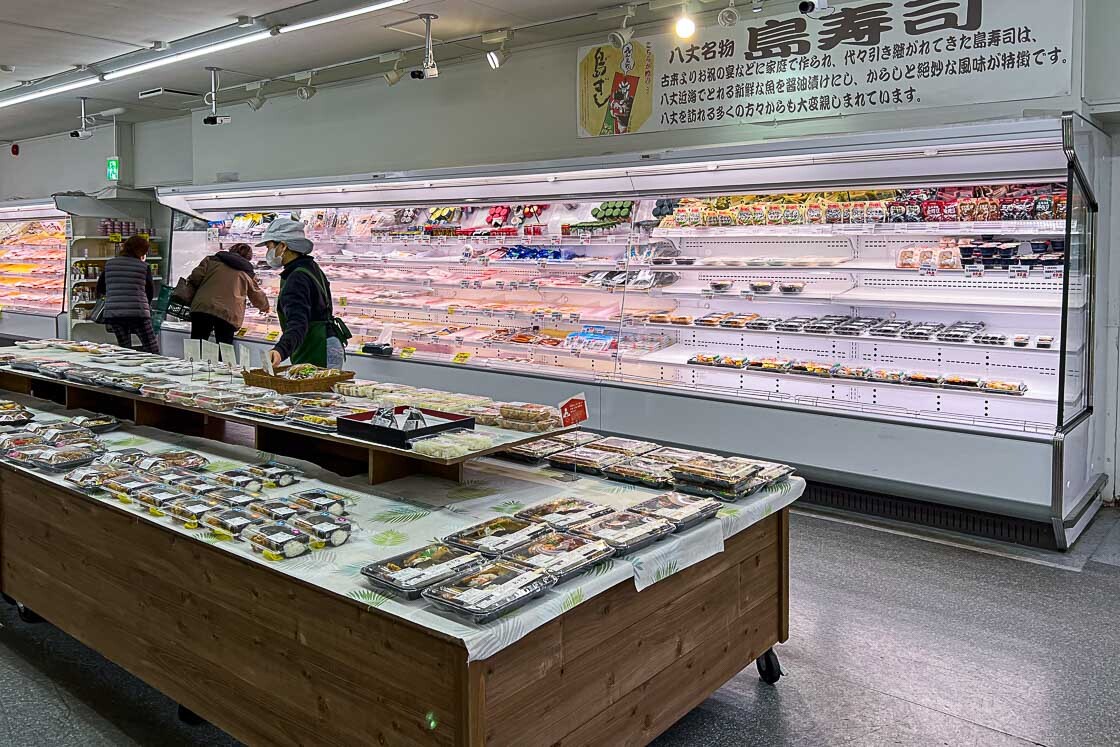
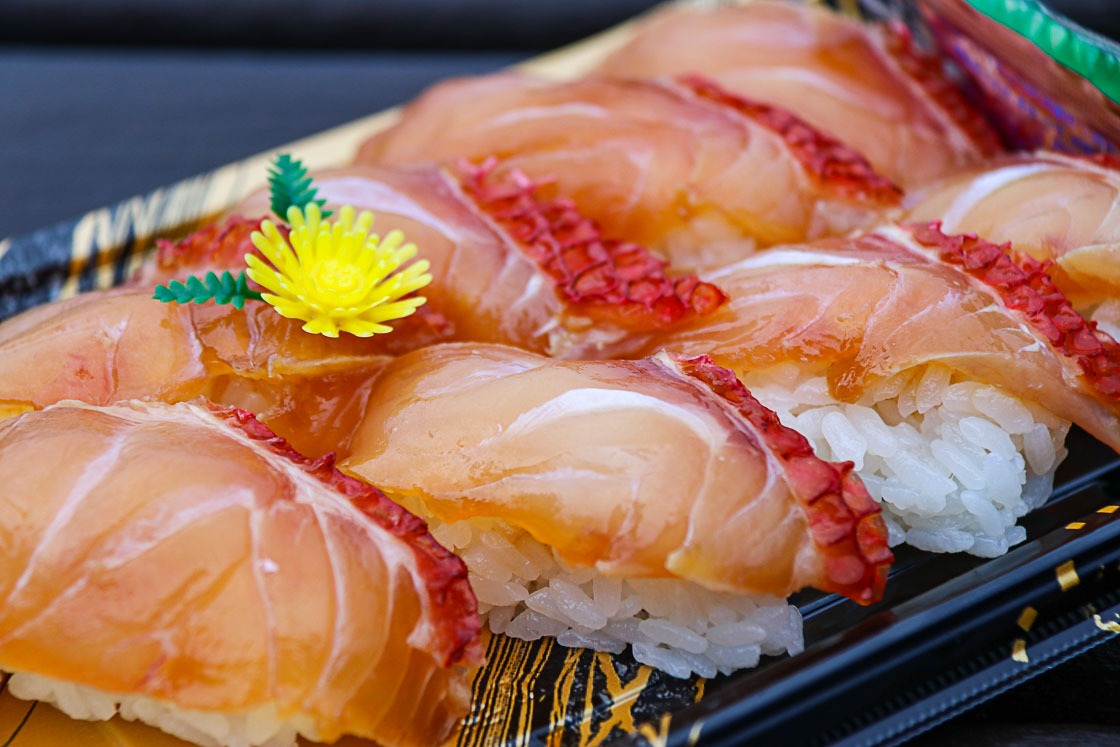
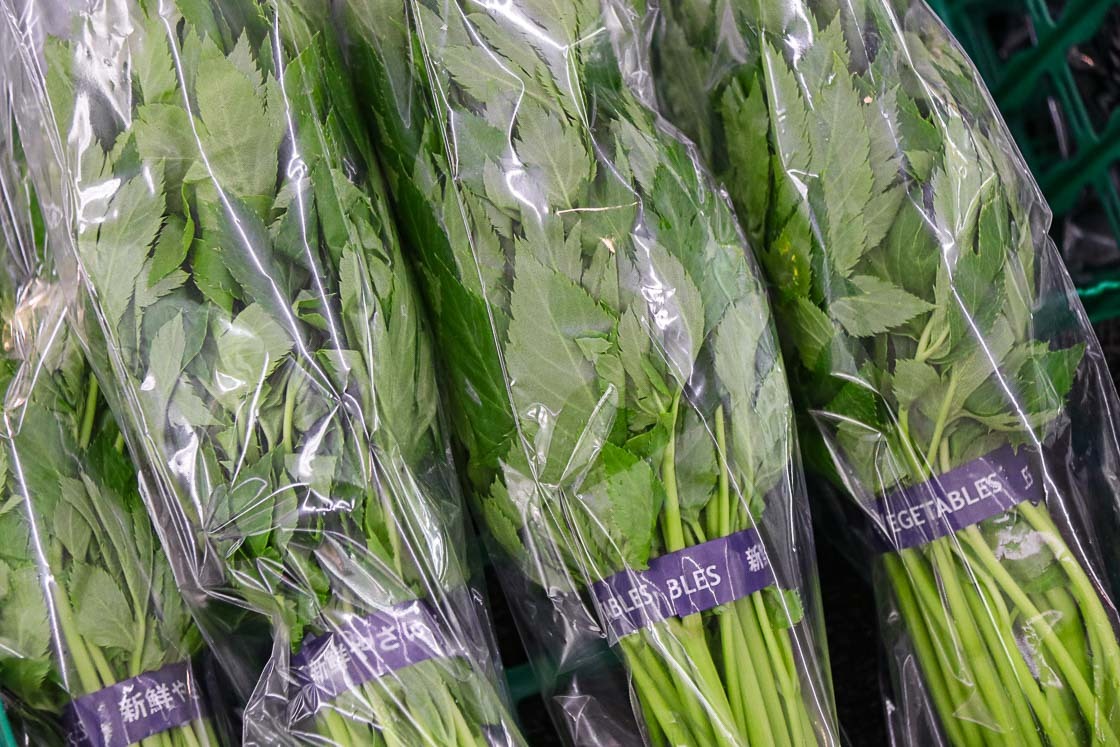
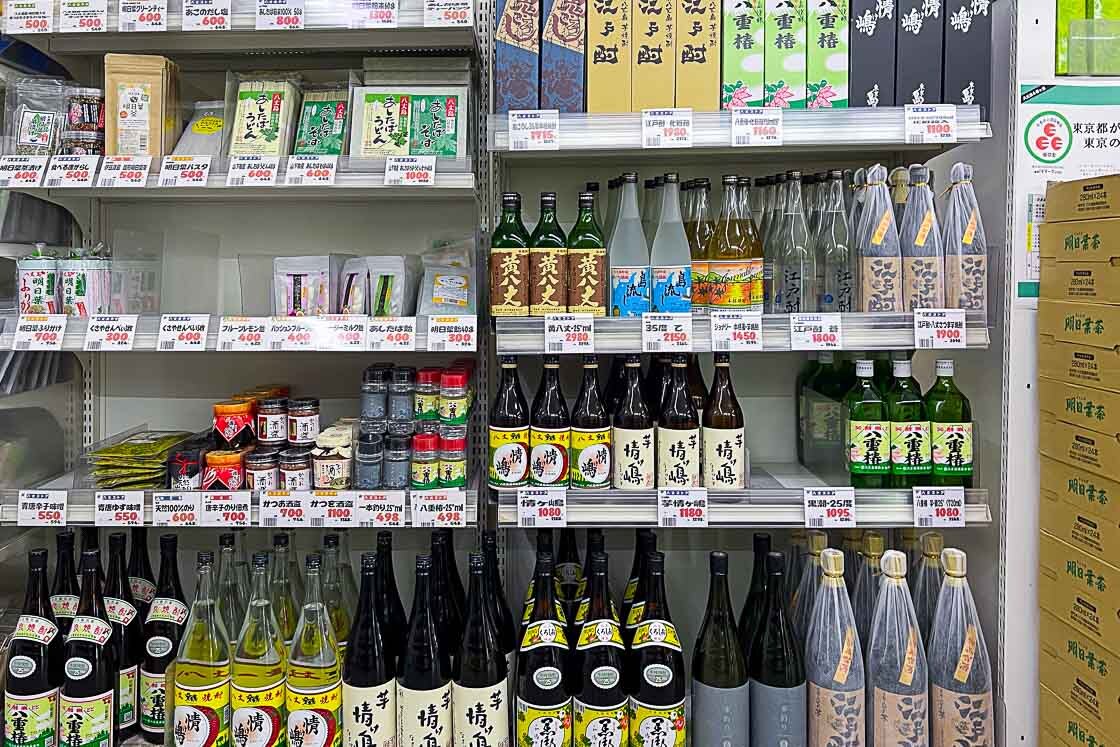
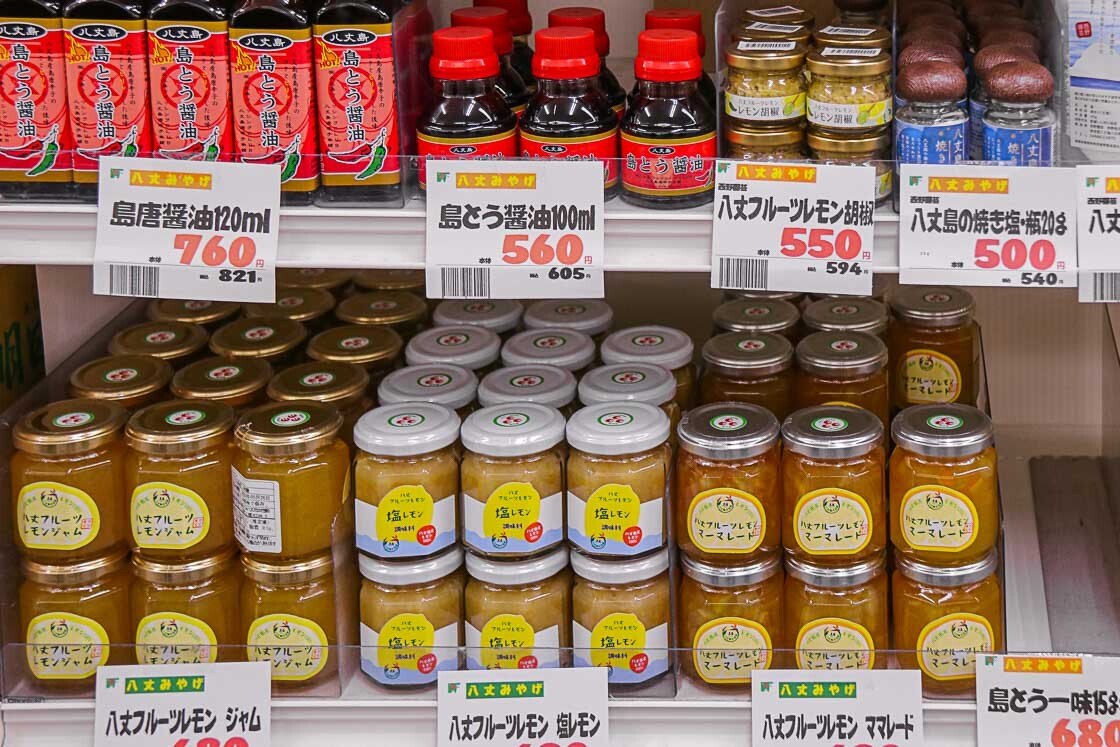

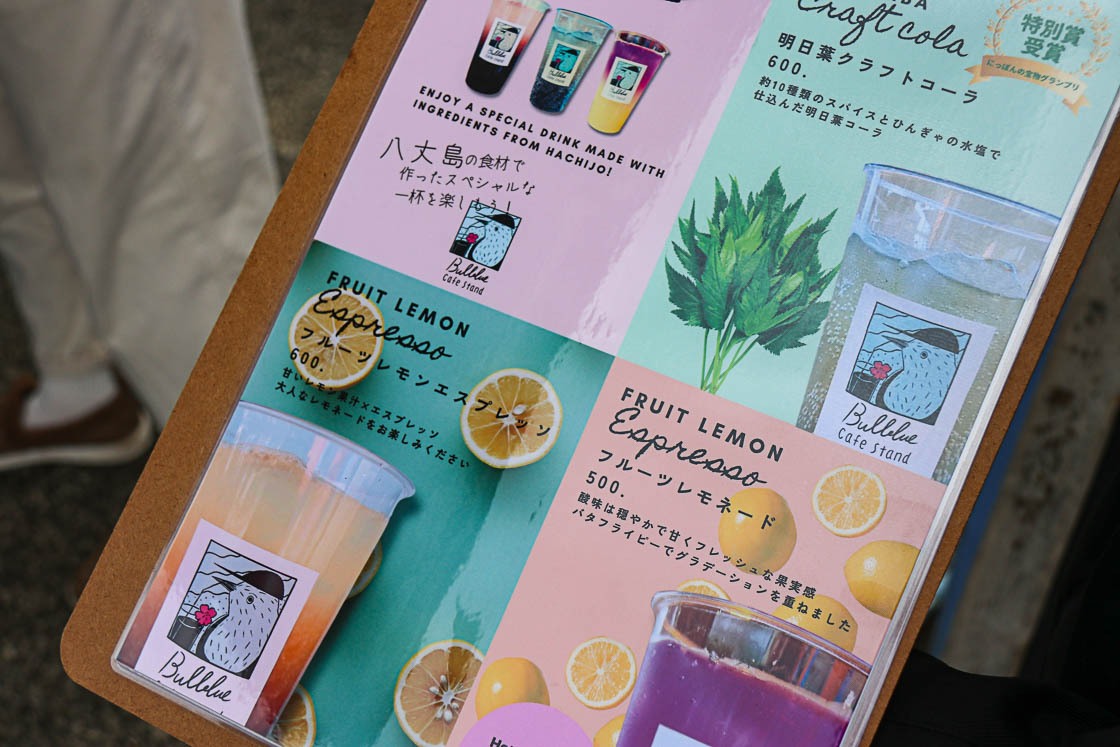
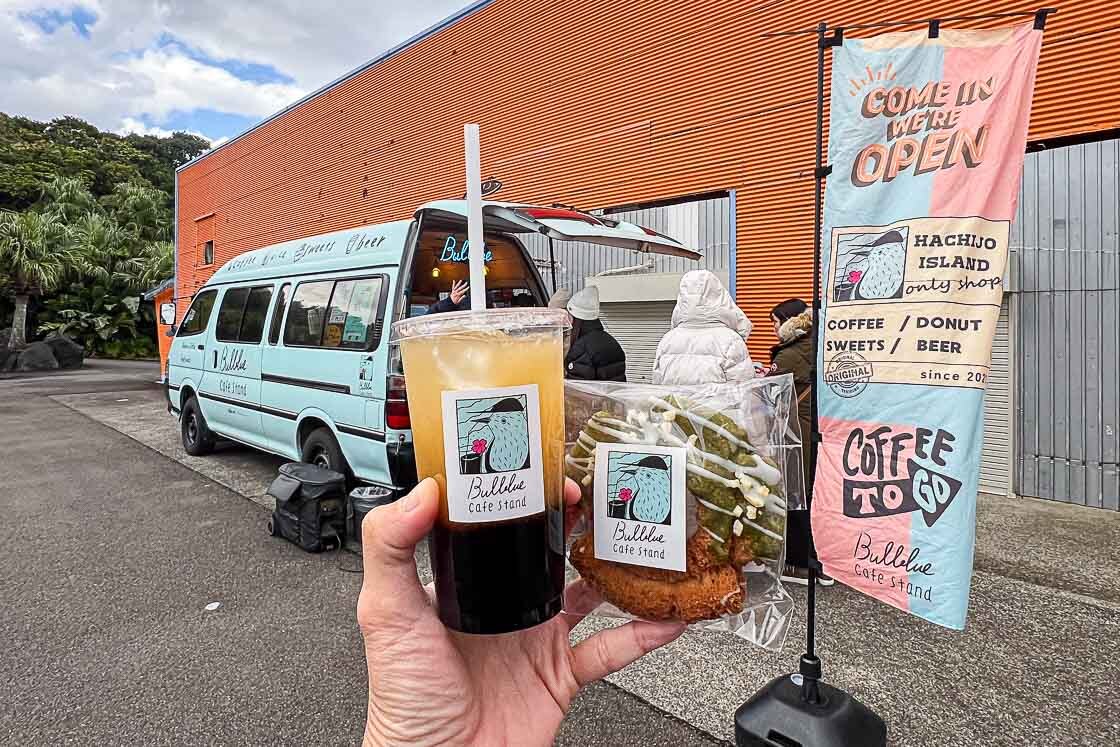
Tokyo is not just about downtown Tokyo with the crowds, skyscraper buildings and neon lights. When the city gets too claustrophobic, just remember that there is this remote island filled with abundant nature and wildlife about an hour away by airplane from central Tokyo.
How to get to and around Hachijojima
Hachijojima can be accessed from central Tokyo by airplane (3 return flights daily, 50 minutes one way from Haneda Airport) or overnight ferry (one departure daily, 10.5 hours one way from central Tokyo). Public transit is available on the island - there is one bus every 1-3 hours - and taxi service is scarce. Consequently, rental cars are the recommended means of transport for convenience and flexibility. Airport or port pick up services are typically offered by the rental car companies. Be sure to check with the company beforehand. The island is not big, and it takes about one hour to drive around its circumference.
Rental bicycles are available on the island and can be convenient for moving within central Hachijo. It is possible to cycle around the island, but such a feat requires time and strong legs as the terrain is hilly.
